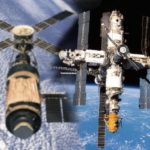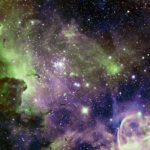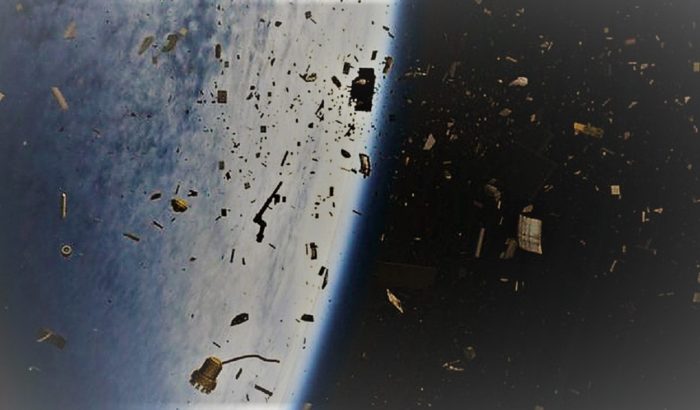
Space Debris: The Urgent Problem It Presents For Space Exploration
- By
- March 28, 2018
- September 28, 2021
- 18 min read
- Posted in
- Space, Future Exploration
While it is something rarely thought about by most of us, for those looking to explore the cosmos the issue of “space junk” is an increasingly problematic one. As well as the billions upon billions of dollars’ worth of satellites, not to mention the International Space Station, there is a sea of debris, burned-out boosters, and dead satellites racing around Earth’s orbit. It is only through pure luck and some last-minute decisions that such debris hasn’t caused a major incident.

Space debris could become a real problem for future space missions
It is a problem that does need a solution, however. Otherwise, future missions to the stars may fail before they have the chance to escape Earth’s atmosphere if it happens to meet even a small piece of space junk head-on. There are a number of ideas in the development stages on how to overcome the problem. It would appear whatever action is eventually taken, it needs to be sooner rather than later. And one that sees a collective human effort and agreement regardless of nationality.
For example, although there have been very few major incidents involving space junk, even one collision, even if it were of two pieces of “rubbish” no longer in use, would make the problem one-hundred times worse. These collisions turn two pieces of very trackable objects into many smaller objects, each setting off in different directions. These objects are traveling an estimated 17,500 miles per hour. Even an object the size of a pin can cause considerable damage to a satellite. Furthermore, should such a small object collide with an astronaut directly, it would be enough to kill them.
Before we look at this in more detail, check out the short video below that demonstrates the problem at hand.
Contents
- 1 An Immediate Effort To Track Debris Around The Earth
- 2 Attempts To Combat The Problem Rather Than Just Monitor It!
- 3 The Technology Exists But No One Wants To Pay To Utilize It!
- 4 Constant Danger Of Collisions
- 5 Just what Is Up There?
- 6 A Bizarre Mix Of Items And Potentially Deadly Relics Of The Cold War
- 7 What, And Who Is At Risk?
- 8 Are We In Danger Here On Earth From Space Debris?
- 9 What Might Happen If An Active Satellite Was Destroyed By Space Debris?
- 10 The Debris Consequences Of The Columbia Disaster
- 11 International Cooperation Required
- 12 Dire Predictions Unless Action Is Taken!
- 13 Has The “Tipping Point” Already Been Reached?
- 14 Both Government And Private Enterprise Have A Part To Play (And Pay!)
- 15 What Can Be Done?
- 16 First Space Junk Clearing Mission Launched In December 2019
- 17 A Plethora Of Ambitious Projects
An Immediate Effort To Track Debris Around The Earth
Almost as soon as humanity began venturing into space in the late-1950s did efforts begin to track the debris it left behind in Earth’s orbit. In fact, it was following the successful launch of Sputnik 1 by the Soviet Union that appeared to prompt NORAD (North American Aerospace Defense Command) to begin keeping data of just what debris was floating around the planet, and where it was. In doing so, they would also begin keeping records of all launches into space (at least the ones they were aware of), including the many satellites, which would in themselves increase dramatically over the coming decades.
This job was, however, rather more complex than merely keeping track of what was launched and when. There were multiple other areas of data to compile and monitor. For example, those keeping such data had to monitor every single explosion that took place in orbit and how much debris from that explosion there was, each of which had to be then monitored and tracked.
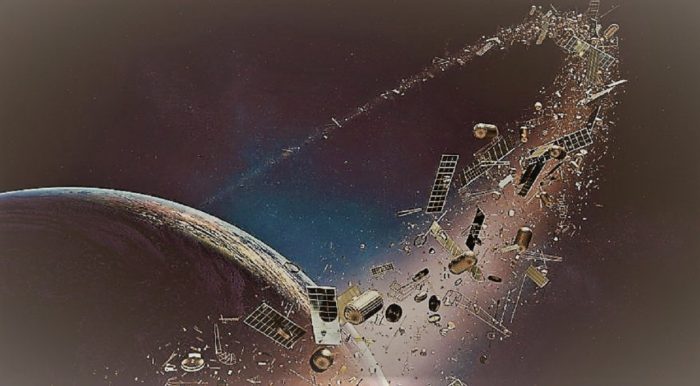
A depiction of space debris orbiting the Earth
These studies eventually developed an area of expertise in its own right, with not only the space debris being cataloged and tracked, but the various orbits of these pieces of debris were accurately predicted more often than not. This would be crucial as the 1960s unfolded and the many space missions of not only the Soviet Union but NASA themselves increased in pace as the Space Race moved on. From merely putting a manned vehicle in orbit, they now sought to place a man on the Moon.
NORAD would eventually make the data [1] on space debris they had compiled available in the public domain. As the 1980s went on and technology developed, so did the compiling of such data, as well as ideas for how we might overcome the problem.
Attempts To Combat The Problem Rather Than Just Monitor It!
Whether as a result of increased debris or perhaps just an increased awareness of it and the problems it was beginning to pose, as the 1980s were upon us, efforts to simply keep and maintain data on space debris began to become more proactive and in tune with reducing it significantly – essentially, to have a big clean up around the Earth itself.
One of the main problems or causes of space debris, for example, was the discarded booster sections that propelled the respective vehicle or object into space but then were no longer needed once in orbit. As opposed to simply letting these useless pieces of machinery simply float around the planet and potentially collide with other discarded pieces of equipment, one of the first steps to solving the problem was to have the booster use up any fuel it had remaining by moving as far away from the Earth as possible.
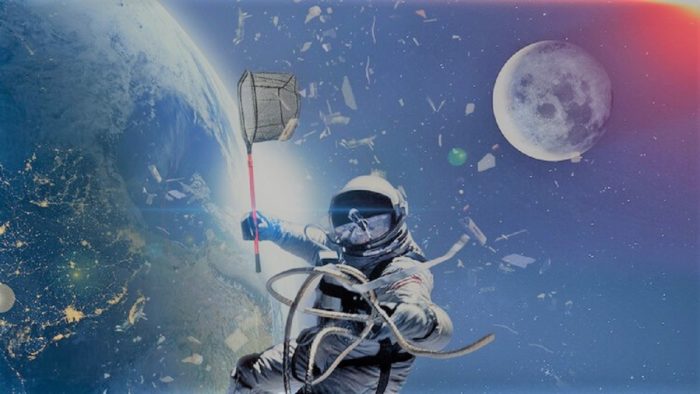
A depiction of an astronaut in space among debris
This would be a double-type solution, as it not only placed the boosters further afield and out of the way of orbiting satellites, but the using of the fuel meant there was no longer a danger of these boosters exploding due to a build-up of pressure in the fuel tanks themselves. Of course, these explosions simply compounded the problem as they turned one large piece of space debris into many, many smaller pieces of debris, all traveling in different directions.
However, while the United States was active in moving its booster sections out of orbit, other countries, namely the Soviet Union were slow to do so. As a result, any gains that might have been achieved were essentially, wasted.
These efforts would continue through the remainder of the twentieth century, but as the new millennium announced itself, the problem of space debris was worse than ever.
The Technology Exists But No One Wants To Pay To Utilize It!
Perhaps it is worth noting here, before we look at some of the problems facing space exploration from space debris, as well as some of the proposed ways we might deal with it, that the biggest obstacle appears to be humanity itself – more specifically, those that call the shots and enjoy influence in the political, business, and economic circles. Not to mention those that navigate international relations. Indeed, combating space debris will surely have to be an international effort, and, generally speaking, if history has taught us anything, having multiple countries on the same page will be difficult to maintain.
What’s more, while space missions continue to go ahead, satellites continue to be launched, and ever more adventurous programs begin to be planned, there appears to be no actual accountability for the debris such missions cause. In short, if one company or organization chooses to launch a vehicle or satellite into space, the responsibility for monitoring and clearing the debris from that mission does not fall squarely on that organization’s shoulders but simply becomes part of the overall problem.
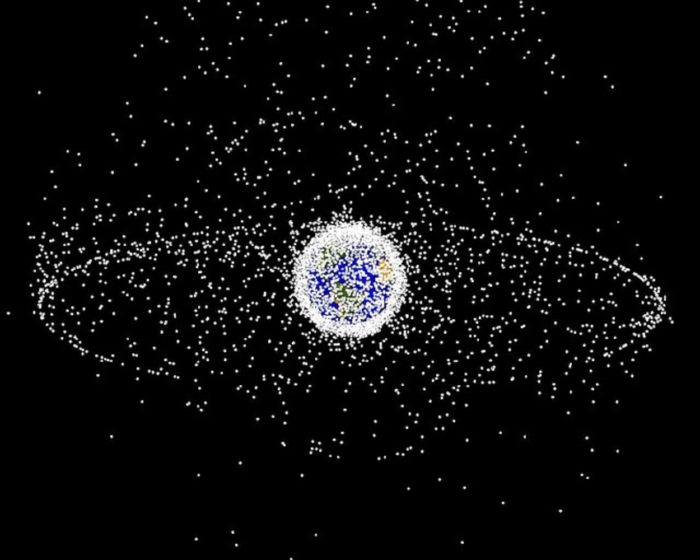
The problem of space debris is getting worse
According to the title of a 2014 article [2] on Space News, “companies have (the) technologies, but not business plan for (an) orbital debris cleanup”. Indeed, the loose agreement from many who are concerned with such matters is that financial incentives will likely have to be offered to see significant movement toward a genuine effort to clear the orbital regions of the planet of the increasing rubbish leftover from missions into space.
At the moment, there appears to be an unofficial standoff between governments and private sector space programs as to who foots the bill, or at least what proportion of it. And as we shall see next, that standoff may one day have disastrous consequences.
Constant Danger Of Collisions
As we have written about before, the International Space Station is essentially the first permanent human residence in space. Since it’s official launch in the late-1990s, it has remained in Earth’s orbit providing us with an open window into the outer cosmos.
It too, however, has been a victim of space debris. On several occasions, it has had to make last-minute adjustments to its location to avoid a collision. [3] It is perhaps worth bearing in mind that such a change takes days to complete. While most of the time, these collisions are foreseen, and the ISS has moved accordingly, sometimes there isn’t enough time to carry out such a move. While the outer body of the ISS undoubtedly sustains damage on these occasions, the astronauts themselves will enter a specially designed shelter – like a safe room – where they will remain until any damage can be assessed and it is safe for them to return.
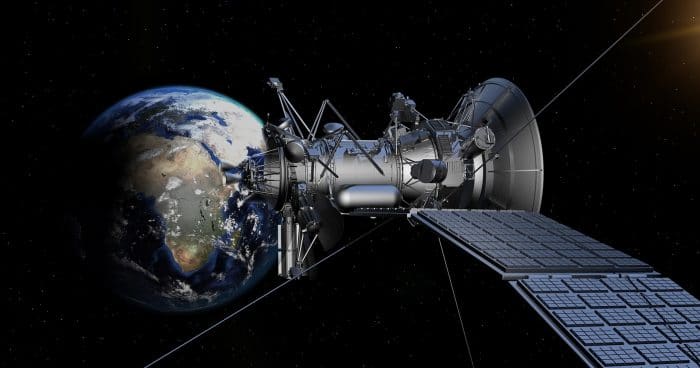
A depiction of a satellite orbiting the Earth
It isn’t just the ISS that has a permanent residence in Earth’s orbit. There are countless satellites roaming around the planet. [4] These carry out various jobs from television broadcasts to mobile phones and internet access. Basically, they are responsible for a huge portion of the modern, convenient way of life most of us enjoy today.
Although any potential damages could be repaired and overcome, in a world of increasing tension and distrust, the monitoring of space junk and such damage is of importance if only to avoid an “international misunderstanding”.
For example, should a satellite that is responsible for a nation’s defense systems suffer sudden damage, it may be mistaken as an act of hostility from a perceived enemy nation? There were several such incidents involving UFOs and nuclear power stations that almost kickstarted US-Soviet conflicts beyond the rhetoric of the Cold War.
Just what Is Up There?
We have spoken of the many boosters that are aimlessly orbiting the Earth under no control whatsoever. There are, though, a small plethora of other dead objects currently in orbit.
Perhaps, alongside boosters are the high number of “dead” or no longer functioning satellites that roam around the Earth’s orbit at high speed. And several of these have been in orbit for decades. Widely accepted to be the oldest surviving of these satellites from a past age is the Vanguard I, which was launched by the United States in 1958. There are also several satellites from the seventies and eighties that remain relatively intact.
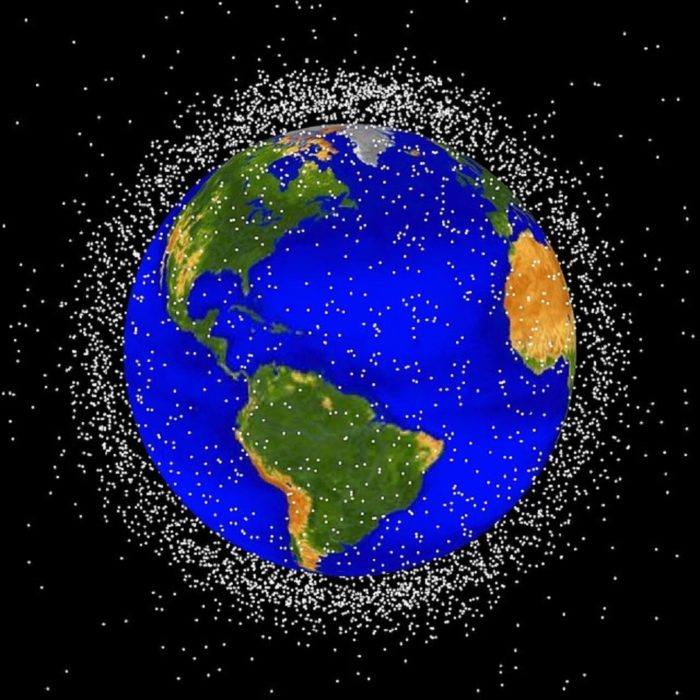
Space debris might make it impossible to travel into space within the next century
However, this in itself poses another potential problem. Many of the satellites in question – or more specifically, the coolants used in them – have the potential to leak its encasing. If it does so, the sodium-potassium alloy will become frozen droplets, which then begin on their own random courses and so further adding to the increasing amount of debris in orbit.
What’s more, this concern is a constantly evolving one. And these potential leaks could happen at any time, and likely do.
A Bizarre Mix Of Items And Potentially Deadly Relics Of The Cold War
Although the Cold War ended almost three decades ago – at least officially – there are still dangerous remnants of it floating around in space in the form of anti-satellite technology employed by each of the superpowers during the decades, perhaps not least in the 1980s amid Reagan’s infamous Star Wars program. While numbers differ on the exact number of these now-defunct but still potentially deadly anti-satellite pieces, they are thought to be in the hundreds at the very least.
It is perhaps ironic that these decades-old vessels, while never actively deployed in terms of an attack during the many years of the Cold War could, in theory, cause significant harm, and even loss of life, now in our modern age.
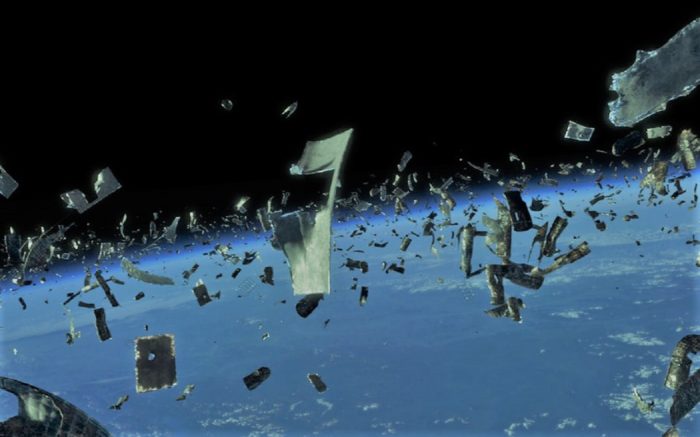
Every time space debris collides, it creates hundreds more pieces of debris, adding to the problem
As well as the many heavy-duty machines and vessels, there is also an abundance of smaller objects, although no less dangerous. For example, there are at least several pieces of equipment that have inadvertently ended up in orbit following the many spacewalks that have taken place, including a glove, several cameras, a toothbrush and a thermal blanket (indeed, some researchers state that this blanket or one like it is often mistaken for the famous Black Knight Satellite). In fact, one astronaut even lost an entire tool bag which is also orbiting the planet somewhere.
In short, there is all manner of objects and wreckage orbiting the Earth. And each represents a danger to the active vehicles also in orbit, as well as to any future space missions.
What, And Who Is At Risk?
It isn’t just the International Space Station that is at risk. For a start, we might look to the many shuttles that bring supplies and astronauts to the space station, all of which have to have their routes planned so as to avoid any free-flying debris.
There are a further number of unmanned missions. And should they fall victim to space debris, not only is there the financial cost to consider, but also the fact that the vessel itself becomes another piece of space debris itself.
We should perhaps consider, as unlikely a scenario as it might seem, that some estimates suggest that even escaping the Earth’s orbit will be impossible should the amount of space debris not be dealt with. This would present humanity with a problem that would be ironic in the extreme – that as we developed the technology to reach and further explore the stars, we might become trapped on our own small, planet due to such developments.
Indeed, as dramatic as it might seem to some, the entire future of space exploration – and possibly the human race should we even need to vacate the planet en masse at some point in the distant future – could be at risk if we don’t deal with the issue of space debris right now in our contemporary era.
And we should also note the risk – however small – that such debris finds its way, intact, through the atmosphere and hurtles toward the ground somewhere on Earth. And it is there that we will turn our attention to next.
Are We In Danger Here On Earth From Space Debris?
Although there have been no deaths or significant injuries due to space debris falling on Earth, there are several incidents involving very near misses on record. And perhaps more frightening, at least according to NASA records, one piece of space debris hits the Earth each day, on average, and has done so for the last half a century.
Most of the incidents of injury to people from space debris have occurred from the 1990s onward – which perhaps is an indicator of the vastly and rapidly growing number of items hurtling around the planet in recent years. There is, though, an account that dates back to 1969 when five sailors on a Japanese vessel were injured when a piece of space debris landed in their vicinity.
Perhaps one of the better-detailed [5] cases occurred in Tulsa, Oklahoma in January 1997 when a local resident, Lottie Williams, was slightly injured when a piece of a propellant tank that had taken a US Air Force satellite into space several months earlier struck her in the shoulder. The piece that struck the unsuspecting woman was only around six inches across and was sheer bad luck that it even struck her at all.
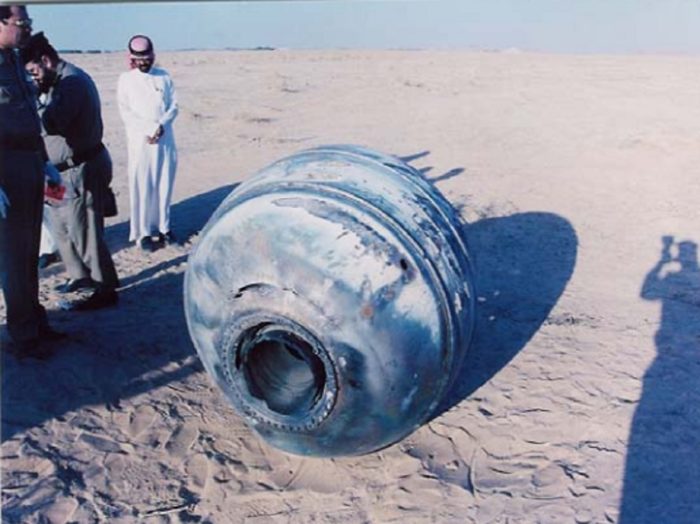
A piece of space debris that fell in a desert in Saudi Arabia in 2001
Another incident occurred in January 2001 when an upper stage rocket of a GPS satellite launched eight years earlier crashed to Earth in a desert in Saudi Arabia. Perhaps even scarier and almost certainly potentially more dangerous [6] was an incident in March 2007 when the pilot of a commercial passenger plane witnessed what was debris from a one-time Russian spy satellite. The “flaming space junk” only just missed colliding with his plane, which was carrying over 270 passengers over the Pacific Ocean at the time.
What Might Happen If An Active Satellite Was Destroyed By Space Debris?
Maybe we should contemplate for a moment just what the consequences might be if one or several of the many active satellites that we still very much rely on here on Earth was to become victim to a hurtling piece of space debris heading in its direction.
Depending on which piece (or pieces) of apparatus was damaged, anything from the Internet, television, and even GPS could be instantly affected. Even the ability to make telephone calls could temporarily grind to a halt.
Aside from the fact that such an occurrence would result in a temporary technological paralysis, there is also the possibility that such a freak occurrence could be mistaken for an act of hostility by one nation against another. [7] Once more, we might remind ourselves of the several incidents of strange sightings of UFOs that opposing sides, albeit briefly, believed to be the other’s secret spy planes. At least a handful of missile launches almost took place against the backdrop of such events.
In the modern world of the early-twenty-first century, then, with mistrust as rampant as it has ever been between various nations on Earth, we might consider that should a piece of space debris cause damage to, or even outright destroy a major satellite in Earth’s orbit, the far-reaching consequences could be very grim indeed.
The Debris Consequences Of The Columbia Disaster
Although it pales in comparison to the fact that all six astronauts on board died, the Columbia space shuttle disaster of February 2003 also resulted in a small abundance of debris [8] falling back to Earth at various locations across the United States, most predominantly over Texas and Louisiana. And on this occasion, several incidents of damage caused by the debris were reported, including a dentist’s office that saw a piece of the wrecked shuttle smash through their roof.
Over 80,000 pieces of debris were eventually cataloged as having fallen to the Earth. Perhaps even more macabre and harrowing was that the remains of the astronauts on board were also discovered scattered over the hundreds of square miles. Perhaps the most graphic of such finds were made by Mike Gibbs in Hemphill close to the border with Louisiana. On a quiet road, Gibbs would discover “a charred torso, a thigh bone, and a skull” close to other debris eventually confirmed to be from the shuttle.
There were several other reported finds, although most were of equipment and pieces of metal. In fact, official warnings were issued to any residents who might come across such wreckage to report it immediately and not to touch anything in case of “contamination from toxic substances”.
What is perhaps interesting, and a testament to how widespread the fallout of debris actually was, is that people were still discovering wreckage from the disaster as recently as 2018. What’s more, it could very well prove that further discoveries of the wreckage will be made in the coming years.
The short video below features a news report from the Columbia disaster.
International Cooperation Required
If we agree, then, that there needs to be complete international cooperation on not only how to combat the problem of space debris, but also on the understanding of its dangers to life on Earth, where do we go from here?
The US Air Force has seemingly taken the lead in the drive to catalog and track as many pieces of space junk as possible. [9] They would begin doing so in the early-1980s and to date have over 500,000 pieces of “rubbish” on their database. There are also many international agreements in place to bring back as much space junk as possible to Earth instead of allowing to it remain in orbit and out of control.
There are several other long-term and much more ambitious projects to tackle the space junk problem – some of which we will look at in a moment. However, due to the astronomical costs any of the projects will involve, [10] the pressure to succeed the first time is immense. This is partly relieved by a number of private companies who are more than willing to stump up the costs for a chance to not only solve a genuine world issue but to demonstrate their technology on the world stage. Although this would deal with the issue of costs, a failure would still risk turning an already large problem into a much bigger one. With this in mind, it is likely that any final decision on how to deal with the problem will likely involve both private and public funds and influence.
The short documentary below is worth taking the time to watch.
Dire Predictions Unless Action Is Taken!
Just to demonstrate how desperate the problem of space debris is becoming, according to a study by NASA in 2006, should all launches into space cease immediately, the amount of debris in orbit [11] would maintain itself until well past 2050. And perhaps even more concerning, collisions would most likely cause that already large number of pieces to increase. Indeed, between 2006 when that study was announced and only half a decade later, the number of known pieces of debris had just short of doubled from 13,000 to around 22,000 pieces.
These dire predictions were also voiced by another researcher on the other side of the Atlantic, Hugh Lewis from the University of Southampton in the UK, who would state at the European Air and Space Conference in 2009 that the amount of space debris would likely double by 2020 and would most likely quadruple by the end of the 2050s. [12]
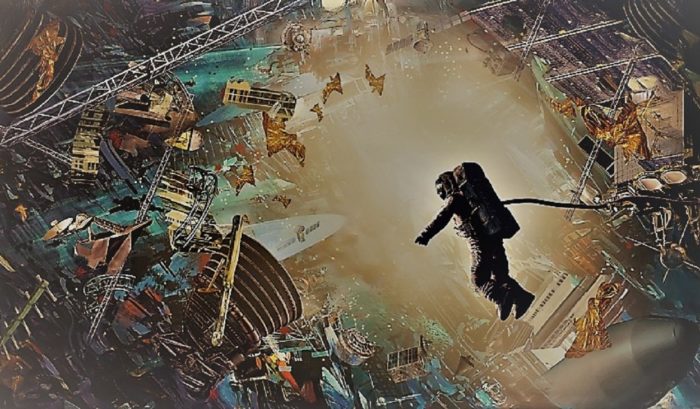
A dramatic depiction of an astronaut surrounded by space debris
There is even concern from some quarters that these pieces of space debris – hurtling around the planet at thousands and thousands of miles per hour, might even begin entering the planet’s atmosphere and falling on unsuspecting cities around the world.
These issues were hard enough to control when the planet watched the Americans and the Soviet Union battle it out to reach the stars. However, now with multiple countries involved in space missions, as well as an equal number of private enterprises, the orbital zone around the planet looks set to become more crowded than ever.
As an example of this, while we have already highlighted the concern of accidental collisions of debris, we might point to a move by the Chinese government who ordered its military to destroy an out of date weather satellite with long-range missiles in 2007, so turning one piece of debris into many.
Has The “Tipping Point” Already Been Reached?
Even more harrowing than the predictions of Hugh Lewis in 2009 where the findings of a report conducted by the United States Nations Research Council two years later in 2011. According to their findings, space debris had “reached a tipping point”, [13] further elaborating that there was so much in orbit that collisions between them were a certainty, with each such collision ultimately creating more debris. Even worse, this would almost certainly “raise the risk of spacecraft failures”.
An article on the National Geographic platform in 2019 would suggest that “the problem is only getting bigger”. The article goes on to state that an incident a decade previously when two unused satellites, each traveling over 22,000 miles per hour, crashed into each other around “500 miles above Siberia” creating even more space debris to do the same somewhere else in the orbit of the planet at some point in the future.
We might also point to another example of cosmic self-harm [14] in the form of the 2019 announcement of the Indian authorities of carrying out an “anti-satellite test” that, according to NASA, could pose a legitimate threat to the safety of the International Space Station. According to the report, although most of the debris will likely reenter the atmosphere due to the low altitude of the test target, the fact that one such satellite was quickly turned into over 400 separate pieces shows how such action is “not compatible with the future of human space flight”.
Indeed, the speaker Jim Bridenstine would state that there was also a danger that other countries would watch India’s actions and begin to think they should carry out such dangerous tests.
You can check out a video of that report below.
Both Government And Private Enterprise Have A Part To Play (And Pay!)
As well as the increased number of national governments launching their own space programs, there are increasing numbers of private companies looking to do the same. In fact, one of the concerns of Jim Bridenstine was the many commercial operations taking place at low-orbit that would now have to be alert for added debris that could possibly head their way and consequently put such operations at risk.
One of the most recent of these commercial operations was the deployment of broadband internet satellites by OneWeb and SpaceX. For some, though, there were concerns that they themselves will only add to the problem of space debris. And while each of the companies involved are officially required to have a plan aimed toward the reduction of space debris, including satellites that will “deorbit naturally”, ultimately, it remains to be seen how such missions play out.
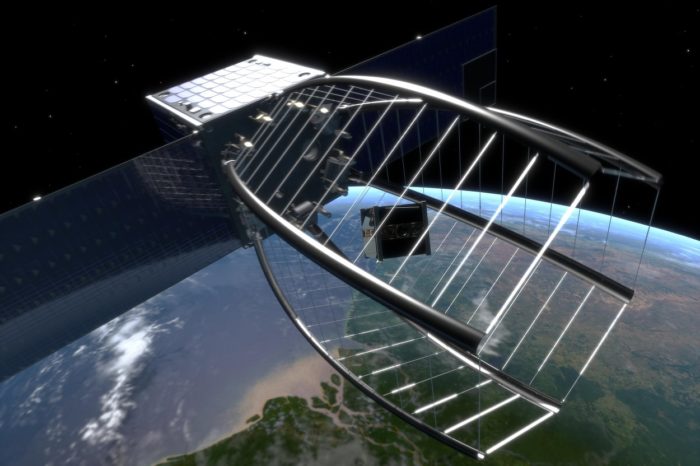
A depiction of a space device to scoop up debris
Indeed, the many private commercial operations, both in the low-Earth orbit and in upper orbit, make for a double-edged sword of sorts. On the one hand, they will undoubtedly contribute to the increased discarded traffic around the planet, while on the other, they will very likely contribute even more to both the exploration of space and the clean-up of it.
What Can Be Done?
There is one thing that all organizations involved in space exploration can agree on – that something most certainly has to be done. However, coming up with an agreed plan of action might be as much of the hurdle as actioning it successfully. As we have already examined above, it is the concerns of experts in this field that political and economical concerns most often override any potential plans of action – and have done so for decades.
We will examine briefly some of the more ambitious ways to overcome this cosmic problem shortly. However, there is an array of ideas that have been put forward. And they range from hurling smaller pieces of debris into the Earth’s atmosphere to using laser and electrodynamic technology.
Some plans look to deploy a large net in order to ensnare as many items of space debris as possible and then move them to another location. While some corners call for this captured junk to be sent back to Earth where it will likely burn up as it enters the atmosphere, others suggest that the offending load be cast off into the deep reaches of space. And while we might think that it is a big enough universe for us to send a few thousand dead satellites and other pieces of metallic junk into, the fact is it could be a decision that might come back to haunt us in future space missions.
Whatever missions and programs are eventually given the green light to proceed, it will most likely take various levels of unprecedented international cooperation for them to succeed. And if our true goal is to one day reach further into space than the Moon, and even Mars, that cooperation is vital and much needed.
First Space Junk Clearing Mission Launched In December 2019
Although ClearSpace-1 – a clean-up mission by the European Space Agency (ESA) – launched in December 2019 to begin the first official purposely planned space clean-up, it is itself only an experimental mission [15] to “prove the concept works”. It is hoped that by 2025 the agency will be in a position to launch a “four-armed robot” into the orbit of Earth that will “track down space waste like Pac-Man in a maze”.
The intended target of the first mission is of the ESA’s own pieces of debris known as Vespa. The robot will approach the object in question and use its arms to grab on to it. It will then drag the object toward the Earth so that it will burn up as it enters the atmosphere. On this occasion, this will also mean that the robot doing the grabbing will also burn up. However, long term plans are for the space junk hunting robot to drag the debris out of orbit and then eject it toward its final fiery destination.
Incidentally, the cost of the mission is well over $100 million and costs will only rise with future missions. However, if they prove successful, if only in trials, it could well be a cost worth paying. What’s more, there is at least one other company [16] – Astroscale in Japan – who looks set to launch its own space clearing mission.
Perhaps the director-general of the ESA, Jan Worner, sums up the situation by comparing the dangers of space junk and having to negotiate it to imagining sailing on the seas “if all the ships ever lost in history were still drifting on the top of the water”. When thought of like that, it is easy to see what a genuinely pressing problem space junk really is.
A Plethora Of Ambitious Projects
Some of the plans to tackle space junk are extremely interesting and futuristic. For example, the European Space Agency are developing a “robot astronaut” [17] named “Justin”. It is the hope that Justin would carry out the repairs on the outside of the ISS. This will remove the risk to astronauts themselves. Even more remarkable are the plans for the Columbus laboratory on the ISS to control Justin using an exoskeleton glove. The specially designed glove will give the wearer the feel of touch using electrical pads and sensors. This is vital in such delicate repairs required in space.
In terms of protecting the planet, one particularly intriguing plan is the Space Fence Project. [18] This is a system of digital radars that allow the tracking of smaller, but no less deadly, pieces of debris. This information will allow such agencies as NASA and the ESA to give ample warning for approaching dangers. In turn, this decreases the risk of damage or fatalities. It won’t, however, do anything to actually reduce the amount of space junk.
Other ideas are still very much in the planning stages. One such project aims to gather as much space debris as possible in a huge “space net”. Once achieved it will shift the mass of rubbish away from the Earth’s orbit and into outer space. Of course, where it ends up after that is anybody’s guess. Even more ambitious ideas include the use of laser technology. This will move or “push” larger pieces of debris out of the orbit of the Earth.
Ultimately if a solution isn’t reached, then many fear humans will literally be trapped on Earth. [19] Unable to escape into space through the mess of our own making. The video below looks at the issue a little further.
References
| ↑1 | NORAD Two-Line Element Sets Historical Archives 1980-2004 http://celestrak.com/NORAD/archives/ |
|---|---|
| ↑2 | Companies Have Technologies, but Not Business Plans, for Orbital Debris Cleanup, Jeff Foust, Space News, November 25th, 2014 https://spacenews.com/42656companies-have-technologies-but-not-business-plans-for-orbital-debris/ |
| ↑3 | Trouble in orbit: the growing problem of space junk, Dr. Hugh Lewis, BBC, August 5th, 2015 https://www.bbc.co.uk/news/science-environment-33782943 |
| ↑4, ↑7 | Rise in space junk could provoke armed conflict say scientists, Ian Sample, The Guardian, January 22nd, 2016 https://www.theguardian.com/science/2016/jan/22/rise-in-space-junk-could-provoke-armed-conflict-say-scientists |
| ↑5 | Jan. 22, 1997: Heads Up, Lottie! It’s Space Junk!, Tony Long, Wired, January 22nd, 2009 https://www.wired.com/2009/01/jan-22-1997-heads-up-lottie-its-space-junk/ |
| ↑6 | Jet’s flaming space junk scare, Jano Gibson, The Sydney Morning Herald, March 29th, 2007 https://www.smh.com.au/lifestyle/jets-flaming-space-junk-scare-20070329-gdps8y.html?page=fullpage#contentSwap1 |
| ↑8 | Shuttle Debris Falls on East Texas, Louisiana, Associated Press, Fox News, February 1st, 2003 https://www.foxnews.com/story/shuttle-debris-falls-on-east-texas-louisiana |
| ↑9 | Space Debris and Human Spacecraft, NASA, May 26th, 2021 https://www.nasa.gov/mission_pages/station/news/orbital_debris.html |
| ↑10 | The trouble with space junk, The Economist, May 11th, 2015 https://www.economist.com/the-economist-explains/2015/05/10/the-trouble-with-space-junk |
| ↑11 | Risks in Space from Orbiting Debris, J C Liou and N L Johnson, Science, January 20th, 2006 https://www.science.org/doi/abs/10.1126/science.1121337 |
| ↑12 | Space debris threat to future launches, Paul Marks, New Scientist, October 27th, 2009 https://www.newscientist.com/article/dn18050-space-debris-threat-to-future-launches/?ignored=irrelevant |
| ↑13 | Space junk at tipping point, says report, BBC, September 2nd, 2011 https://www.bbc.co.uk/news/world-us-canada-14757926 |
| ↑14 | NASA: Debris From India’s Anti-Satellite Test Raised Threat To Space Station, Bill Chappell, NPR, April 2nd, 2019 https://www.npr.org/2019/04/02/709032198/nasa-debris-from-indias-anti-satellite-test-raised-threat-to-space-station?t=1594216167613&t=1632859194372 |
| ↑15 | The First Mission to Remove Space Junk From Orbit Has Just Been Commissioned, Carly Cassella, Science Alert, December 10th, 2019 https://www.sciencealert.com/first-tow-truck-trash-collector-will-pick-up-space-waste-like-pac-man-in-2025 |
| ↑16 | Astroscale, ClearSpace aim to make a bundle removing debris, Debra Werner, Space News, October 11th, 2019 https://spacenews.com/astroscale-clearspace-aim-to-make-a-bundle-removing-debris/ |
| ↑17 | Driving a robot from Space Station, The European Space Agency, June 29th, 2011 https://www.esa.int/Enabling_Support/Space_Engineering_Technology/Driving_a_robot_from_Space_Station |
| ↑18 | Space Fence radar system to identify, track space junk, Sally Cole, Military Embedded Systems, January 27th, 2015 https://militaryembedded.com/radar-ew/sensors/space-track-space-junk |
| ↑19 | Space Debris Could Trap Humans on Earth, Prevent Space Exploration, David Russell Schilling, Industry Tap, February 1st, 2016 https://www.industrytap.com/space-debris-trap-humans-earth-prevent-space-exploration/34179 |
Fact Checking/Disclaimer
The stories, accounts, and discussions in this article may go against currently accepted science and common beliefs. The details included in the article are based on the reports, accounts and documentation available as provided by witnesses and publications - sources/references are published above.
We do not aim to prove nor disprove any of the theories, cases, or reports. You should read this article with an open mind and come to a conclusion yourself. Our motto always is, "you make up your own mind". Read more about how we fact-check content here.
Copyright & Republishing Policy
The entire article and the contents within are published by, wholly-owned and copyright of UFO Insight. The author does not own the rights to this content.
You may republish short quotes from this article with a reference back to the original UFO Insight article here as the source. You may not republish the article in its entirety.


